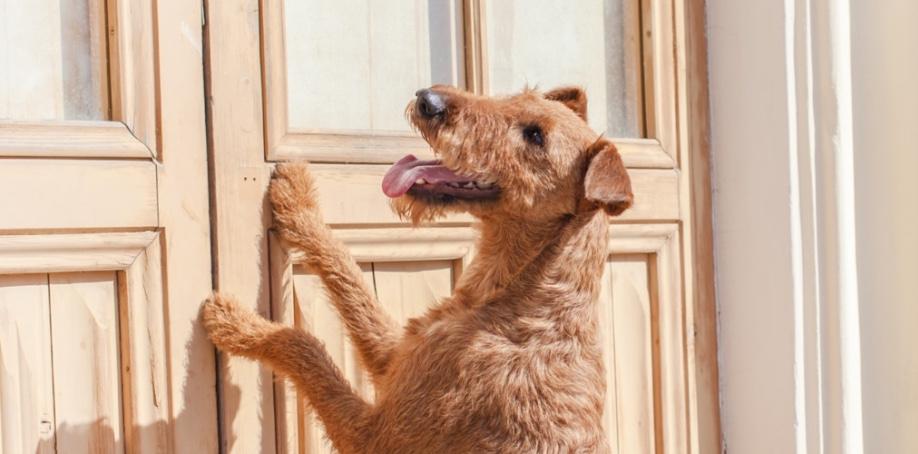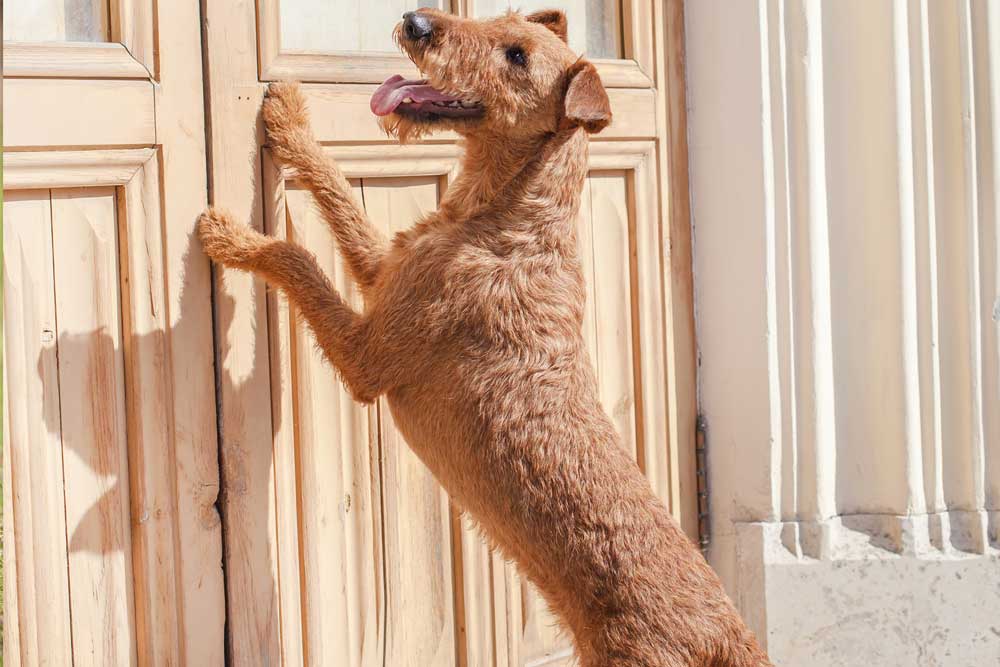
A trademark of most dog owners is the sound of barking to alert owners that a guest is at the door. After the greeting barks, what often comes next in canine-friendly properties is that the excited dogs become overwhelmed with energy and end up jumping on whoever enters the house.
With enough training, owners can teach their dog good manners by having them not to jump or bark at the door. The lack of barking decreases disturbances in the house, but it also significantly reduces the amount of noise coming from your home – a reduction that your neighbors will undoubtedly thank you for.
To stop your dog from going crazy at the door, follow these steps:
Find a spot where you want your dog to be when you have people come over. Consider a spot far enough from the door where your guests can walk inside without your dog blocking their way, but close enough where your dog can still see what is going on.
Take your dog to that spot. Have them “sit” or “down” then ask them to “stay” or “wait” there. As you may remember from previous lessons, you should teach your dog the various stay commands in a variety of locations so that the commands are generalized. Here, you will need to repeatedly practice these commands in this location so that your dog eventually associates the command with a knock or doorbell.
Make sure that your dog can “sit”, “down”, and “stay” before you practice working on stopping jumping at the door. These skills need to be mastered before people come over.
Have someone knock on the door. This is where the real training starts!
Tell your dog “wait,” and take a step toward the door. They should be anticipating your next action.
If your dog breaks the wait, have them sit, and tell them to wait again.
Start opening the door. If the dog breaks the wait, close the door and tell them to wait again. If this happens, you will need to start over from the beginning.
Have someone behind the door start to come in. If the dog breaks the wait, close the door on the person. Start again.
If your dog holds the wait, have the person come in and say hi to you. If the dog breaks the stay, have the person leave and repeat from the beginning.
After you have finished your greeting, give the release command so that your dog can go say hi as well.
Like most advanced commands, working on your dog’s stay requires significant patience on your part. Dogs jump and bark at the door because they are excited to see who is coming in. And although this may be cute when your dog is young and tiny, the adoration quickly turns to stress when you have to hold back your eighty-pound adult when they want to rush the houseguest. Keep your training sessions short to avoid boredom, and do not be afraid to use treats in the beginning of your training sessions. Good luck!





